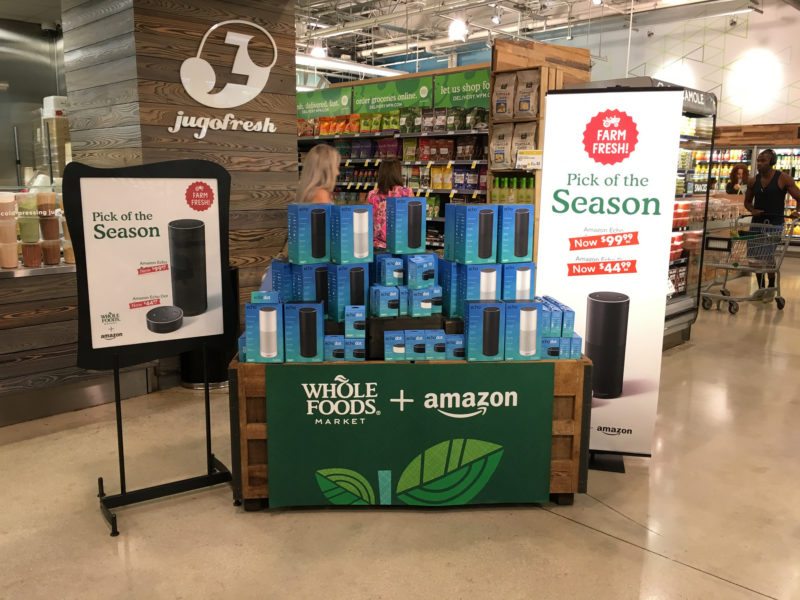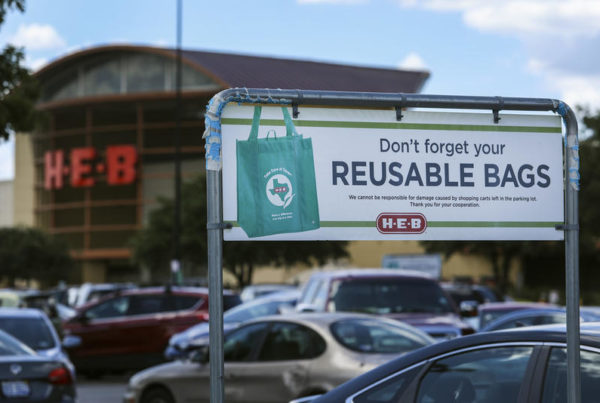One year ago this Saturday, Amazon announced it was buying Whole Foods. There was a flurry of interest about what it could mean for the country’s biggest online retailer to get involved in the grocery business. Since then, the grocery industry has started exploring ecommerce, but Amazon has been moving cautiously.
The biggest changes at Whole Foods itself have had to do with pricing.
“The first thing that they did when they officially took over in August was lower some prices of Whole Foods items,” says Sebastian Herrera, who covers business and technology for the Austin American-Statesman. “They launched the discount program for Amazon Prime members at Whole Foods. It adds 10 percent off of stuff that’s already on sale.”
Amazon Prime, which now has 100 million users, has been a natural way to combine the businesses. Whole Foods now offers grocery delivery as well.
“You know, that said, while they have had price drops, our analysis and even other research groups show that it’s been less than 10 percent, so it hasn’t been that significant.”
Shoppers aren’t likely to see much difference inside the stores either.
“For the most part it feels the same way,” Herrera says. “The biggest difference when you walk in is there’s blue Amazon signs around, and they do sell Amazon products like Kindles and Echos.”
Amazon and Whole Foods combined control less than 2 percent of the grocery marketplace, but United Natural Foods, which is Whole Foods’ biggest supplier, announced last month that their sales to Whole Foods have increased by 24 percent year-over-year.
Dasos Group, an analytics group that tracks movement based on cell-phone location data, also found signs of growth. “They’ve shown that year-over-year foot traffic at Whole Foods has increased by about 3 percent,” Herrera says.
Competitors have also seen changes, Herrera says.
“Target and H-E-B, which is based in San Antonio, they’ve both bought delivery companies,” he says. “Target, in December, they bought a grocery delivery company named Shipt. And H-E-B, just a few months ago in February, bought Favor, which is a food delivery company based in Austin. “
Herrera says Walmart has evolved, too, by expanding grocery delivery and making moves in ecommerce, even testing out robots at their stores for inventory.
“Without a doubt, companies have not been idle since this all happened,” he says.
Back at Whole Foods, customers seem happy with the rate of change they’ve seen in stores – at least for now.
“I think people are definitely expecting, you know, more innovation to happen,” Herrera says. “I mean this is Amazon we’re talking about.”
Written by Rachel Taube.

















